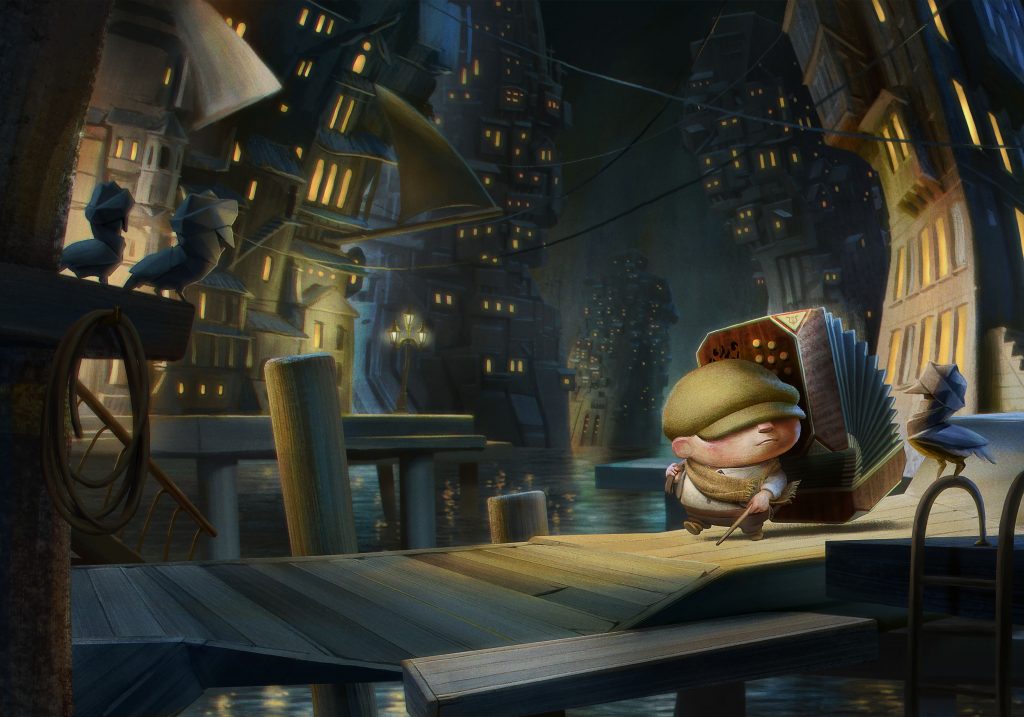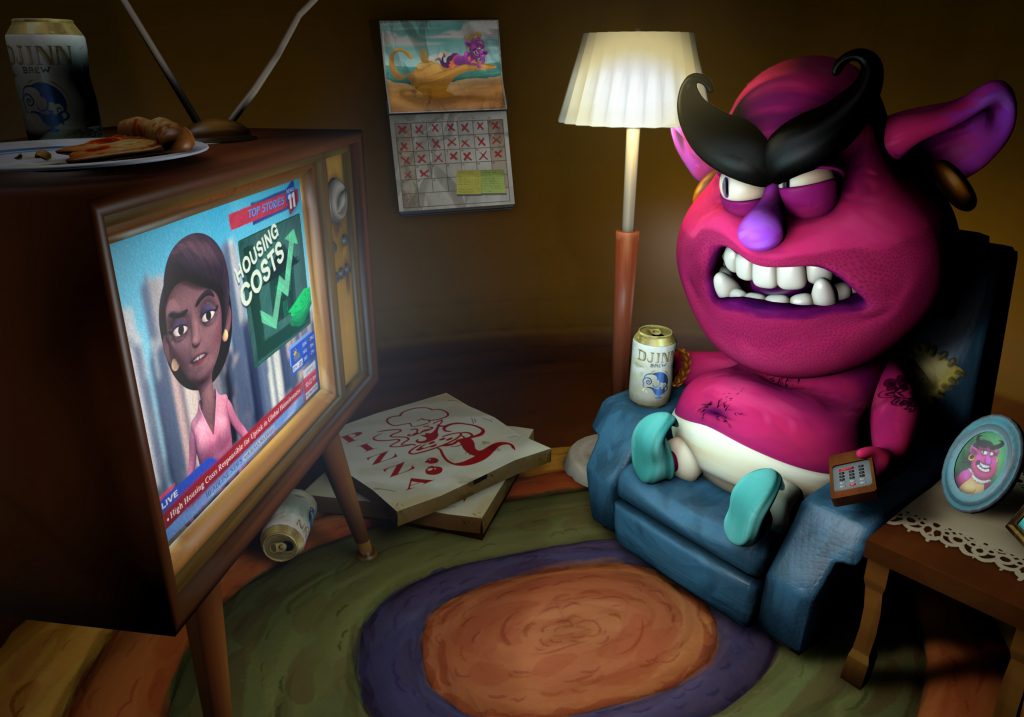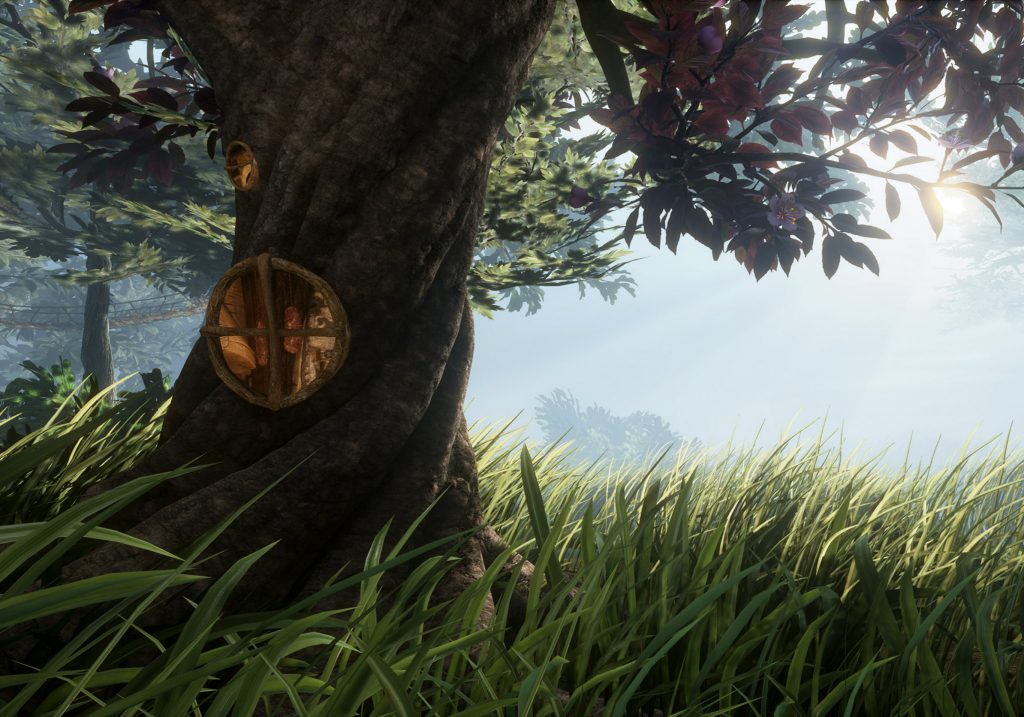Highlights From the 2020 Venice International Film Festival’s Venice VR Expanded
Programmers Liz Rosenthal and Michel Reilhac share their thoughts on this year’s globally accessible event

Since its 2017 debut, the virtual reality competition within the Venice International Film Festival has showcased an industry-leading selection of diverse works from groundbreaking global talent. This division has become a beloved part of the esteemed event’s programming (with its own dedicated virtual reality island) and it consistently offers a glimpse at the future of storytelling. This year, however, health concerns led to a transformation: a name change—to Venice VR Expanded—and thoughtful accessibility efforts that intend to make these artistic works (and the medium itself) more available to viewers everywhere.
Venice VR Expanded’s programmers, Liz Rosenthal and Michel Reilhac, selected 31 projects for the competition this year (and several out of competition projects, too). With runtime ranging from a handful of minutes to more than 70, the style and subject matter of these works vary from immersive narrative adventures to captivating documentaries. And an exciting new development sees three projects—Kiira Benzing’s Finding Pandora X, Jason Moore’s The Metamovie Presents: Alien Rescue and Gilles Jobin’s La Comédie Virtuelle: Live Show—embrace multi-user social experiences, wherein the avatars of live performers interact with the avatars of viewers. Rosenthal and Reilhac answered some of our questions about this year’s advancements—and offered their own list of highlights from this year’s outstanding crop.

Can you explain what the new Venice VR Expanded name means?
Liz Rosenthal: Because this year’s edition is fully virtual, as opposed to the previous editions where it was all physical on the island of Lazzaretto Vecchio, our famous VR Island in the Venice Lagoon, we have tried to find ways to make it an opportunity to expand the ways we reach our audiences. Offering the whole selection remotely will potentially multiply the number of viewers worldwide as opposed to the previous editions where viewers had to come physically to Venice.

Further, there are no longer limitations in terms of booking your slot to view the projects. Unlimited numbers of viewers can watch the same projects at the same time, hence multiplying viewing capacity almost endlessly. Since fewer people were going to be able to come to Venice this year, we have decided to bring Venice to them: we have set up a network of 16 satellite venues in 16 different cities around the world where prestigious cultural institutions are setting up VR viewing lounges offering full access to our selection to their local audiences and press.
We viewed around 150 projects during a period of 10 days, spending around eight hours each day in headsets
Can you describe what the process has been like programming this year’s line-up amidst this hybrid transition and the remote locations?
Michel Reilhac: The selection was done entirely remotely with Liz Rosenthal being in London with the support of Target3D and me in Amsterdam with the support of WeMakeVR. We viewed around 150 projects during a period of 10 days, spending around eight hours each day in headsets. We had to communicate with the creators and producers on a regular basis to fine tune our understanding of what were only prototypes or works in progress at the time. We spoke every day to share our views and make our selection decisions. The teams behind the selected projects have been fine tuning and debugging their works up until the very last minute before opening on 2 September, with the most impressive support and help from our partners HTC Viveport, Facebook’s Oculus, VRChat and VRROOM.

The display of artwork is often essential to the experience of VR and AR exhibitions. How has the user experience changed in this year’s program?
LR: Several artists have had to redesign their experiences from a live set-up to a fully remote experience. In the process, they are finding out that designing an experience that can be serviced to anyone—anywhere in the world without a physical set up—tremendously helps their distribution model. That will accelerate the advent of a significant market with larger audiences accessing the content.

What projects are you most excited about?
MR: It is hard to pick only a few projects from such a wide and diversified selection, where we carefully selected every single work. It’s exciting to see that recognizable names from the film world are now producing innovative works in VR: John Favreau with Gnomes and Goblins, Rose Troche with We Live Here, prestigious casting with Baba Yaga from Baobab by Eric Dranell featuring Daisy Ridley, Jennifer Hudson, Glenn Close and Kate Winslet, or Paper Birds by German Heller and Federico Carlini featuring Archie Yates.
It’s just as exciting to see new talents delivering truly innovative works: Penggantian by Jonathan Hagard, 4 Feet High by a brand new Argentinian team, Ajax All Powerful by Ethan Shaftel, Here by Ashton Lysander and produced by Intel studios, Fan Fan’s Killing a Superstar, Kinshasa Now by Marc Henrj Wajnberg and 1st Step: From the Earth to the Moon by Joerg and Maria Courtial.

Where can Venice VR Expanded be experienced and what does the audience at home need to be able to experience this year’s program?
LR: All info is available on the Venice Biennale site. Most of it can be experienced for free by anyone with a headset or a PC. Additional content can be experienced if the viewer purchases a VR Accreditation for 100 euros, available directly on the website. Then there is Facebook’s Oculus projects, performance based pieces accessible through a booking system. All social events and program inside the Garden area of our Venice VR Chat world. And there is the network of 16 satellite institutions.
Hero image courtesy of 4 Feet High












